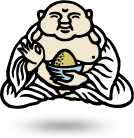Honey, You’re My Favourite
Posted by Pailin Chongchitnant on Thursday, December 24th, 2009Tags for this Article: dessert, honey, panna cotta, tuile, yogurt
 I once entered an essay competition where I was to talk about my favourite ingredient (as if that was possible to choose), and then attach a recipe featuring it. I easily decided that I would write about honey, a staple in my pantry. I chose to attach a recipe I developed, honey yogurt panna cotta, which has become my mom’s favourite. Only three people in the world ever read that essay—the judges—who kindly awarded me first prize. Fortunately, now that I write for Foodists, I have food enthusiasts with whom I can share my culinary writings. So here goes, this version is specially edited for Foodists.
I once entered an essay competition where I was to talk about my favourite ingredient (as if that was possible to choose), and then attach a recipe featuring it. I easily decided that I would write about honey, a staple in my pantry. I chose to attach a recipe I developed, honey yogurt panna cotta, which has become my mom’s favourite. Only three people in the world ever read that essay—the judges—who kindly awarded me first prize. Fortunately, now that I write for Foodists, I have food enthusiasts with whom I can share my culinary writings. So here goes, this version is specially edited for Foodists.
Viscous, amber, floral, sweet—the choice of words to describe my object of passion is endless. Hundreds of little buzzing chemists synthesize this syrupy deliciousness from flower nectar. You may have guessed it: Honey.
Honey fascinates me by its intricate flavours, culinary versatility and nutritional benefits. I find it mind-boggling that something a bee drinks and spits out would turn into an intensely fragrant liquid with a sweetness that far surpasses sugar in complexity.
We are desensitized by the ocean of mediocre, generic honey in supermarkets—simple flavour, pasteurized and devoid of the antioxidants it was once full of. If you can get a hold of an interesting, high quality raw honey, give it a smell. If smell had thickness, this would be it. Taste it. Good honey plays with your taste buds—just sweet at first, then as it spreads on your tongue, a bouquet of flowers explodes and fruity acidity starts to enhance other notes.
The concept of ‘terroir’ makes honey particularly interesting. Which type of flower the bees drink from will determine the honey’s character, but beyond that, the soil, the air and everything in the ecosystem surrounding the flowers will affect the nectar. The honey, therefore, is essentially a representation of the flower’s environment, and honey from every farm will be different.
In cooking, it is extremely versatile. Honey creates depth: try making two batches of blueberry jam, one with sugar and one with honey. One will be kind of banal, while the other has personality. Honey works beautifully as a marinade, especially for pork, and it also helps browning. In a salt-predominant sauce, honey refines the edges of salt, and give a little thickening. Replacing some sugar with honey in cookies yields a softer, chewier product. You can infuse honey with just about every aromatics you can think of: rosemary, ginger or rose. When I have specialty honey on hand, I enjoy it simply on hot buttered toast. You can even make your own specialty honey—let some shaved truffles steep in some honey and you’ll have an earthy sweet accompaniment for strong cheeses like a Stilton.
My love of honey has inspired me to develop a refreshing dessert. The idea started with one of my regular afternoon snacks: Greek yogurt with warmed honey. This dessert exemplifies the unique ability of honey to give flavours to and take flavours from other ingredients. Honey gives its complexity to the panna cotta itself, while the honey in the sauce takes citrusy fragrance from the lemon. The crispy tuile gives textural variety and the nuttiness from the hazelnut balances out the acid in the lemon and yogurt. A few fresh blueberries suffice as garnish.
Honey Yogurt Panna Cotta
With Lemon Honey Sauce and Hazelnut Tuile
Honey Yogurt Panna Cotta
1 ¾ cups whipping cream
1 ½ cups thick Greek yogurt
¼ cup sugar
1/3 cup honey
1 envelope powdered gelatin (11 grams)
1 pod vanilla
¼ cup water
Sprinkle gelatin over the ¼ cup water, let stand
Heat cream, vanilla seeds and pod, and sugar until cream starts to boil, add gelatin, remove from heat and keep stirring until gelatin is dissolved.
In another bowl, mix together yogurt and honey, whisk in the cream.
Strain through a fine mesh sieve into a jug, and pour into custard molds.
Refrigerate until set. Unmold on to a plate by dipping the mold into hot water before unmolding.
Spoon lemon honey over the panna cotta, let it run off and pool all around. Drop a few blueberries in the honey pool, and lean a hazelnut tuile against the panna cotta.
Lemon honey
Heat 1 cup honey on very low heat with the zest of 1 lemon and let it infuse into the honey. Off heat, stir in juice of 1 lemon. Serve warm around the panna cotta.
Hazelnut Tuile
1 egg white
¼ cup ultra-fine (castor) sugar
1/6 cup flour
¼ tsp vanilla
25 g. melted butter
3 tablespoons chopped hazelnuts.
Whisk egg white and sugar together till well combined, sift flour over the mixture, add vanilla and butter, whisk till smooth. Stir in hazelnut. Spread into 3 inch rounds. Bake at 375 F, for 5-6 minutes on Silpat or until golden brown around the edges. While still hot you can curl it by wrapping it around any cylindrical object you can find in your kitchen like bottles or rolling pins.


Posted on December 25th, 2009
degan beley says:
yum! I am totally going to make this in the next couple of days. :)